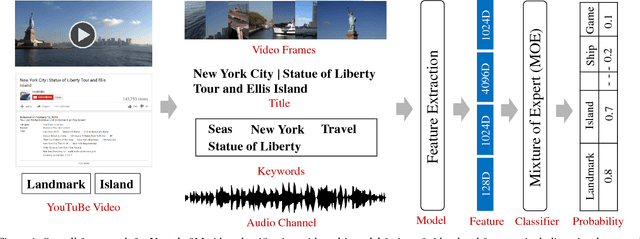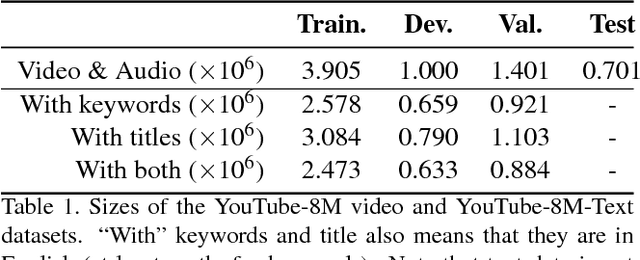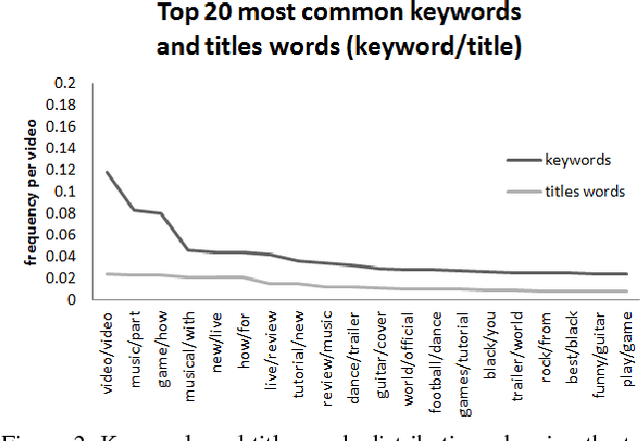Nancy Chen
Incorporating Contextual Paralinguistic Understanding in Large Speech-Language Models
Aug 10, 2025Abstract:Current large speech language models (Speech-LLMs) often exhibit limitations in empathetic reasoning, primarily due to the absence of training datasets that integrate both contextual content and paralinguistic cues. In this work, we propose two approaches to incorporate contextual paralinguistic information into model training: (1) an explicit method that provides paralinguistic metadata (e.g., emotion annotations) directly to the LLM, and (2) an implicit method that automatically generates novel training question-answer (QA) pairs using both categorical and dimensional emotion annotations alongside speech transcriptions. Our implicit method boosts performance (LLM-judged) by 38.41% on a human-annotated QA benchmark, reaching 46.02% when combined with the explicit approach, showing effectiveness in contextual paralinguistic understanding. We also validate the LLM judge by demonstrating its correlation with classification metrics, providing support for its reliability.
In2Core: Leveraging Influence Functions for Coreset Selection in Instruction Finetuning of Large Language Models
Aug 07, 2024Abstract:Despite advancements, fine-tuning Large Language Models (LLMs) remains costly due to the extensive parameter count and substantial data requirements for model generalization. Accessibility to computing resources remains a barrier for the open-source community. To address this challenge, we propose the In2Core algorithm, which selects a coreset by analyzing the correlation between training and evaluation samples with a trained model. Notably, we assess the model's internal gradients to estimate this relationship, aiming to rank the contribution of each training point. To enhance efficiency, we propose an optimization to compute influence functions with a reduced number of layers while achieving similar accuracy. By applying our algorithm to instruction fine-tuning data of LLMs, we can achieve similar performance with just 50% of the training data. Meantime, using influence functions to analyze model coverage to certain testing samples could provide a reliable and interpretable signal on the training set's coverage of those test points.
PromptSum: Parameter-Efficient Controllable Abstractive Summarization
Aug 06, 2023



Abstract:Prompt tuning (PT), a parameter-efficient technique that only tunes the additional prompt embeddings while keeping the backbone pre-trained language model (PLM) frozen, has shown promising results in language understanding tasks, especially in low-resource scenarios. However, effective prompt design methods suitable for generation tasks such as summarization are still lacking. At the same time, summarization guided through instructions (discrete prompts) can achieve a desirable double objective of high quality and controllability in summary generation. Towards a goal of strong summarization performance under the triple conditions of parameter-efficiency, data-efficiency, and controllability, we introduce PromptSum, a method combining PT with a multi-task objective and discrete entity prompts for abstractive summarization. Our model achieves competitive ROUGE results on popular abstractive summarization benchmarks coupled with a strong level of controllability through entities, all while only tuning several orders of magnitude less parameters.
Unsupervised Summarization Re-ranking
Dec 19, 2022



Abstract:With the rise of task-specific pre-training objectives, abstractive summarization models like PEGASUS offer appealing zero-shot performance on downstream summarization tasks. However, the performance of such unsupervised models still lags significantly behind their supervised counterparts. Similarly to the supervised setup, we notice a very high variance in quality among summary candidates from these models whereas only one candidate is kept as the summary output. In this paper, we propose to re-rank summary candidates in an unsupervised manner, aiming to close the performance gap between unsupervised and supervised models. Our approach improves the pre-trained unsupervised PEGASUS by 4.37% to 7.27% relative mean ROUGE across four widely-adopted summarization benchmarks, and achieves relative gains of 7.51% (up to 23.73%) averaged over 30 transfer setups.
Truly Multi-modal YouTube-8M Video Classification with Video, Audio, and Text
Jul 10, 2017



Abstract:The YouTube-8M video classification challenge requires teams to classify 0.7 million videos into one or more of 4,716 classes. In this Kaggle competition, we placed in the top 3% out of 650 participants using released video and audio features. Beyond that, we extend the original competition by including text information in the classification, making this a truly multi-modal approach with vision, audio and text. The newly introduced text data is termed as YouTube-8M-Text. We present a classification framework for the joint use of text, visual and audio features, and conduct an extensive set of experiments to quantify the benefit that this additional mode brings. The inclusion of text yields state-of-the-art results, e.g. 86.7% GAP on the YouTube-8M-Text validation dataset.
 Add to Chrome
Add to Chrome Add to Firefox
Add to Firefox Add to Edge
Add to Edge